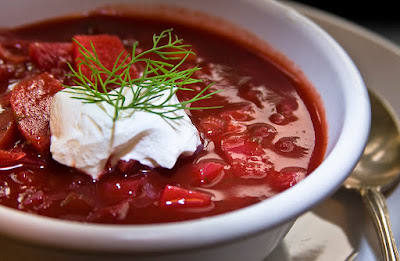Eating habits of Asia

Asia Asia is the biggest continent of all and has definitely the biggest food variety I’ve ever seen ! Therefore I’ve had the idea to just take one example of North, East, South and West Asia. Cause, really, otherwise I would still sit here and write this blog next Christmas and no one wants that. North Asia: Russia The history of Russian cuisine goes back many years. It changed several times mostly due to the influence of other countries and religion (much like Arabia) so new dishes and ingredients were added. A large part of Russian cuisine were preserved foods. Households had to preserve their food because of the cold weather that often lasted very long (like nine months or so). The traditional dishes used to be made of a lot of grains, berries, vegetables, flour and fish. They were all available in the common families, whereas meat was most common for holidays or presented to rich families as culinary masterpieces. To show one of these Traditional dishes: B...

